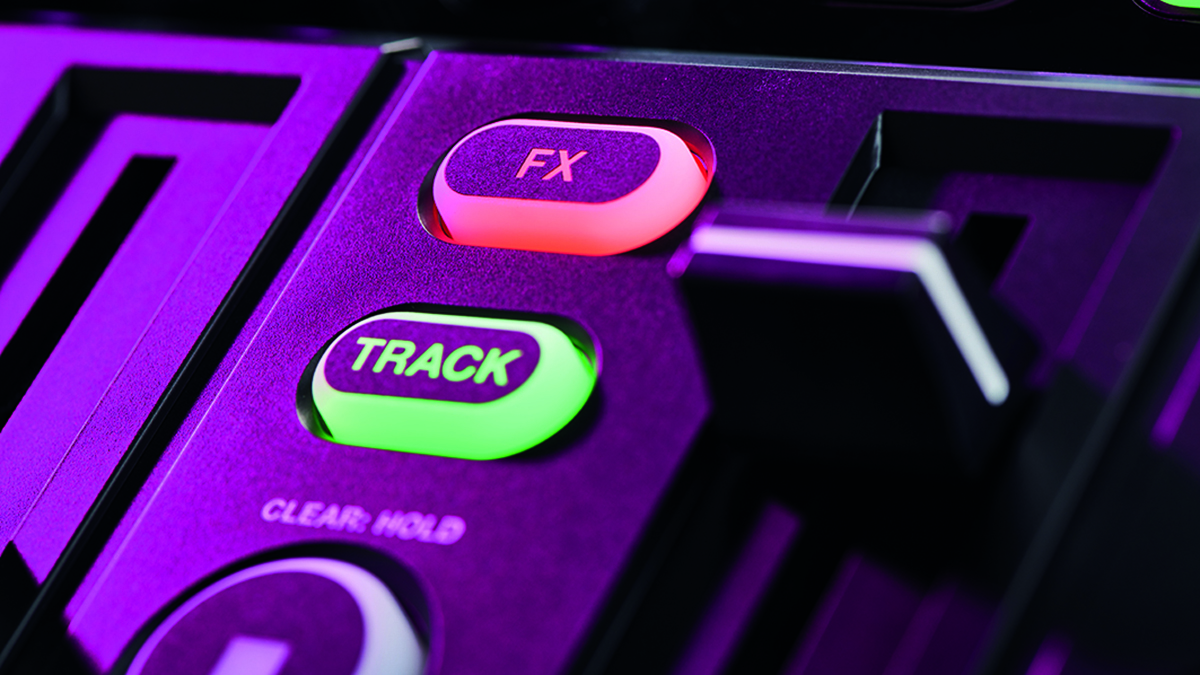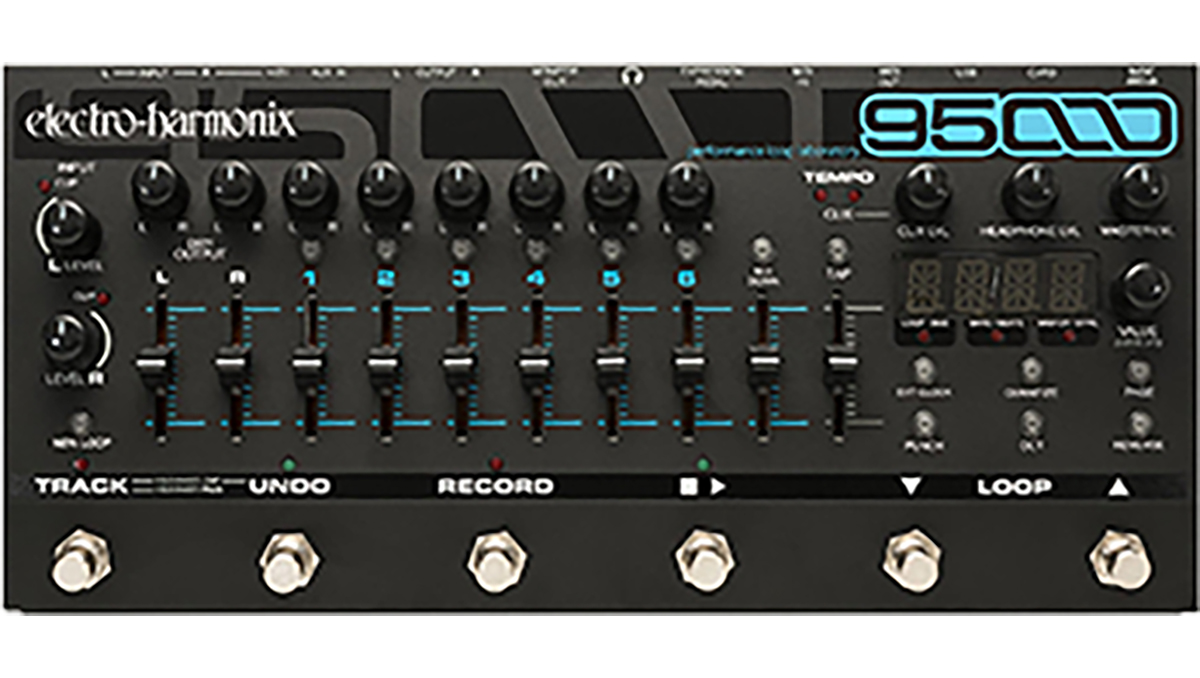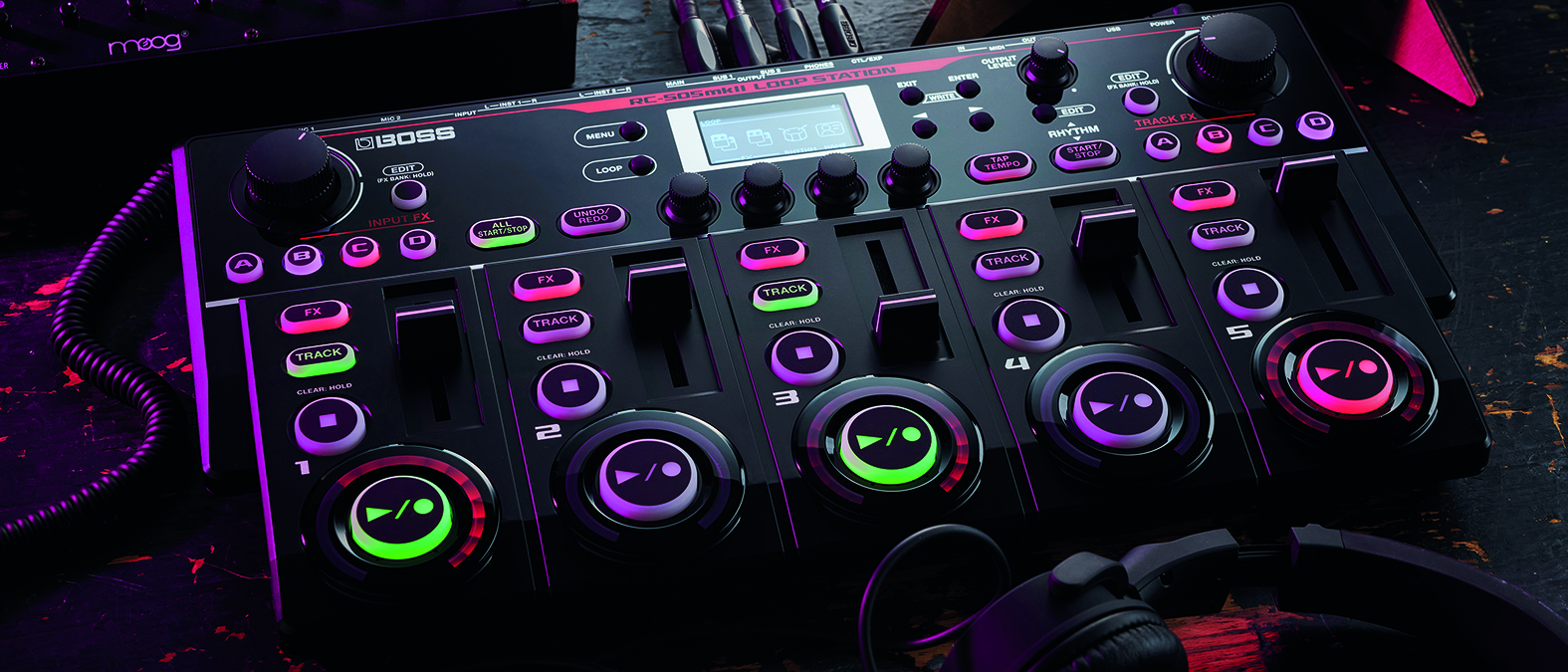MusicRadar Verdict
Boss has extended and enhanced its flagship desktop loop station without compromising its original quality and playability.
Pros
- +
Expanded (customisable) control set for each loop track.
- +
Enormous data storage along with 32/44.1 sample resolution.
- +
A comprehensive effect list with plenty of hands-on control.
Cons
- -
The full range of functions and parameters can take time to absorb.
MusicRadar's got your back
Boss RC-505 MkII: What is it?
The RC-505 MkII is an expanded and enhanced update of the original desktop Loop Station, one of Boss’s many great original designs that has held its own as (digital) audio electronics has charged onwards.
Though much of the layout remains familiar, the five loop tracks have grown in length to accommodate longer throw faders and an extra button, splitting the old Edit into separate FX and Track (select) buttons, the first of a number of performance-related tweaks that help push the creative efficiency of the RC-505 MkII.

There is a lot more light coming off the RC-505 MkII thanks to expanded control set for loop tracks/effects and the larger LCD display. The housing and buttons are durable and robust, which are essential for live performance use. The controls are responsive and intelligently spaced for multitrack manipulations, while the non-performance-related buttons, such as system menus and memory management, are small and discrete to prevent unintended adjustment.
The visual feedback for the loop tracks is excellent during playback/recording and the expanded LCD display can be set to mirror the loop rotations or show input/output levels simultaneously. Of course the display is central to the deeper editing capabilities of the RC-505 MkII along with the four rotary encoders and page navigation buttons that surround it.

Boss RC-505 MkII: Performance and verdict
Before exploring the extensive behind-the-scenes parameters, every user ought to, and will find it hard not to, play with the five loop tracks’ primary features. Recording a loop, overdubbing it, adjusting its level and applying effects is immediately satisfying, and layering up the five tracks is even more so. Pressing the Track button pulls up the five pages of parameters that control the finer details of playback and recording: reversing, speed, loop length, fades, input selection and more.
Having delved in here, it’s easier to understand the architecture of the RC-505 MkII, from effects and rhythm accompaniment to memory management. Though the design is intuitive, there is often a need to cross-reference with the manual as some terminology may need fleshing out and some useful functions may be missed.

It’s a short hop from the five loop tracks to some vital controls: undo/redo, tap tempo, rhythm start/stop and all start/stop. The first of these is not only essential during the recording/overdubbing process but it also provides a temporary layering function during performances.
Want all the hottest music and gear news, reviews, deals, features and more, direct to your inbox? Sign up here.
Tap tempo acts as you’d expect, but also while the tempo is displayed on the screen you have an opportunity to grab a rotary encoder and shift up/down, with the loops stretching and compressing accordingly. At the extremes the digital processing this involves becomes starkly audible, which may or may not be your bag, but shifts of around ±20bpm are handled with minimal degradation, depending on the source.
Getting into the nitty gritty of the looping options only serves to expand the creative possibilities, further dispelling the lack of seriousness one may infer from the rather playful appearance of the RC-505 MkII.

The RC-505 MkII now houses four backlit FX buttons beneath each of the large knobs that bookend its upper section. This may only be one extra effect per section but the Edit button above turns the A-D buttons into bank selectors so that 16 different effect types can be assigned per program to each of the two effect blocks.
The effects can be globally applied to whichever track has its FX button lit, or individually assigned to one of the tracks/inputs. The number of effects has also expanded with 49 available on the Input side and 53 on the Track side.

• Electro-Harmonix 95000
The six-track Performance Loop Laboratory hosts a not-dissimilar feature set, with footswitches that give it some floor-based potential. Less visual feedback and no effect section(s) makes this a more raw looper, though there’s plenty of flexibility via the USB, MIDI and SD card slot.
• HeadRush Looperboard
A deluxe looper which can’t decide whether to live on the floor or the desktop – it has footswitches and a 7” hi-res multi-touch display. Four tracks, MIDI/USB connectivity, built-in drum/percussion loops and effects.
As you can imagine, this is an all but exhaustive collection that runs the gamut from simple distortions and filters to a pattern slicer and pitch/harmony effects. Each has anything from two to ten pages of parameters, though the ten pager is for handling the 16 steps of the step slicer. It may seem overwhelming but they are easy to tweak to taste, and in use a well set-up pair of FX blocks become integral to the process, particularly when the main knobs are called on for filter sweeps, pitch shifts, etc.
Beneath all of this, hidden away in the black housing, a huge expansion has occurred. Though there are still 99 memory slots they now get to share a total of around 13 hours of recording time at 32-bit 44.1kHz resolution; the original had three hours at 16-bit 44.1kHz.
The data processing resolution is matched by the AD/DA conversion, and though human hearing can’t match the dynamic range this allows, it does mean that quiet signals can be boosted without the digital noise floor or dithering becoming an issue. The onboard rhythm section is also generous, whether used for initial recording or actual performance, and there’s plenty of room for expansion via the USB connection.
USB mass storage and interface
The RC-505 MkII USB socket has two utilities: data import/export and audio/MIDI interfacing. Considering the ~13 hours of recording time, running out of space may not be an issue for a while, but archiving, organising memory slot orders for performance and shipping in loops from other sources may well be. Also, it is possible to process loops on your computer to drop back into the looper, or move loops to different tracks.
As an interface the RC-505 MkII can work with your DAW and other apps with MIDI control on the side. The Loop Station can route the incoming USB audio to its line-out or sub mix, or use it as a loop input, which is where the real fun lies.

Additional control of the RC-505 MkII comes in the form of two expression/footswitch sockets and old school 5-pin DIN socket MIDI. The former can be assigned to a range of tasks such as memory slot navigation, tap tempo, rhythm start/stop, effects control, input mutes and various individual track functions. Via MIDI, the RC-505 MkII can transmit and receive clock/tempo, program changes and control changes, the latter part of a comprehensive 16 slot control assignment sub-menu.
The RC-505 MkII may exude a jolly Christmas tree vibe but it is a formidable powerhouse of looping and layering with enough functionality and flexibility to grow with dedicated users. It can be used for a large range of performance, composition and experimentation tasks and benefits from an easy to use control set that draws users in. This is a professional tool that can inspire creativity as easily as it can capture it. There is a lot on offer for the kind of sensible price one expects from Boss.
MusicRadar verdict: Boss has extended and enhanced its flagship desktop loop station without compromising its original quality and playability.
Boss RC-505 MkII: Hands-on demos
BOSS
sonicstate
Ben Rowlands Music
Boss RC-505 MkII: Specifications
- I/O: AUDIO INPUTS: 2x XLR (Mic), 4x 1/4” jacks (line/inst).
- AUDIO OUTPUTS: 6x 1/4” TS (Main and Sub 1 & 2), 1x 1/4” TRS (Phones).
- Other I/O: 2x 5-pin DIN for MIDI, USB-B socket, 2x 1/4” TRS jack for expression/control footswitches.
- MAX RECORDING TIME: approx 13 hours total.
- MEMORY SLOTS: 99.
- DIMENSIONS: 420x 234x 67mm.
- WEIGHT: 1.8kg.
- CONTACT: Boss
